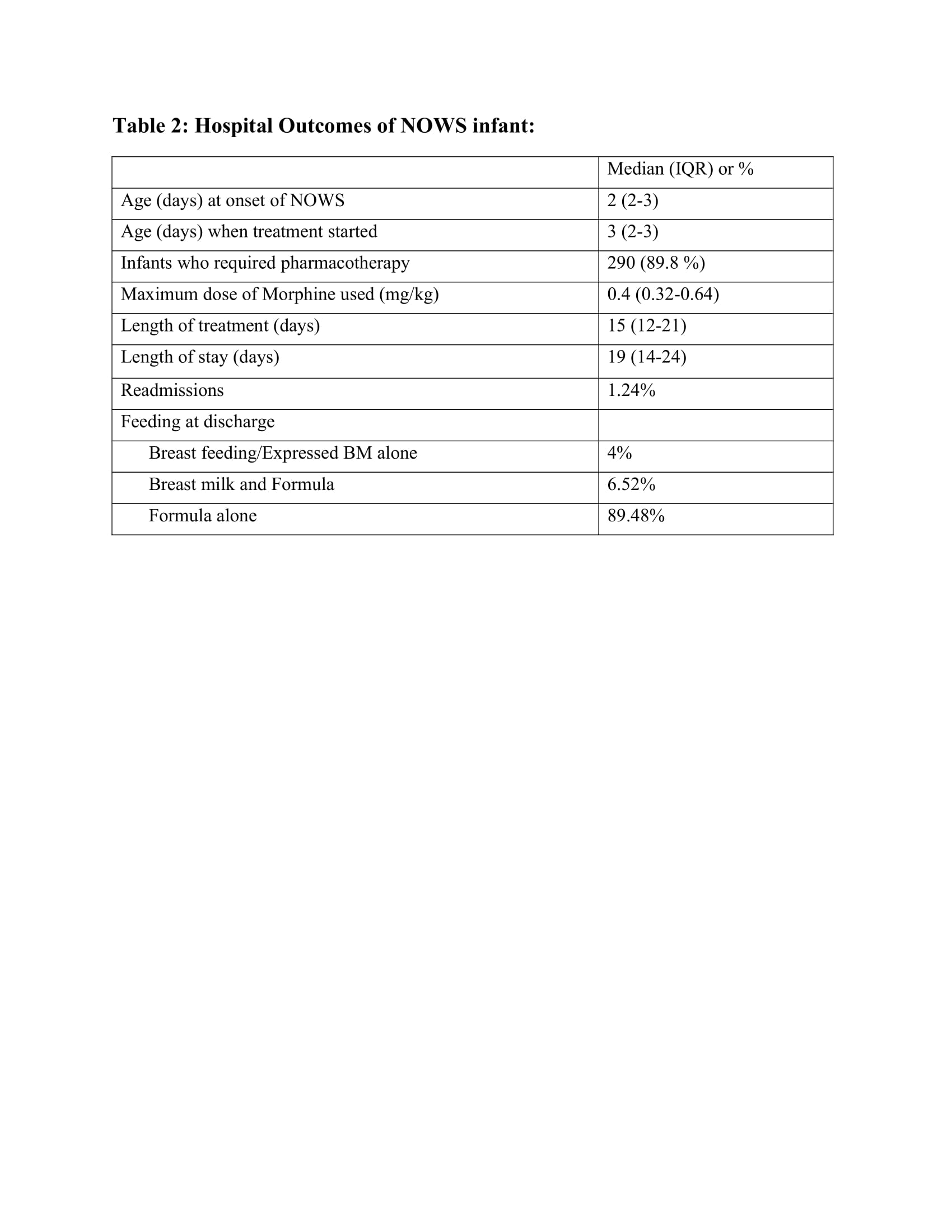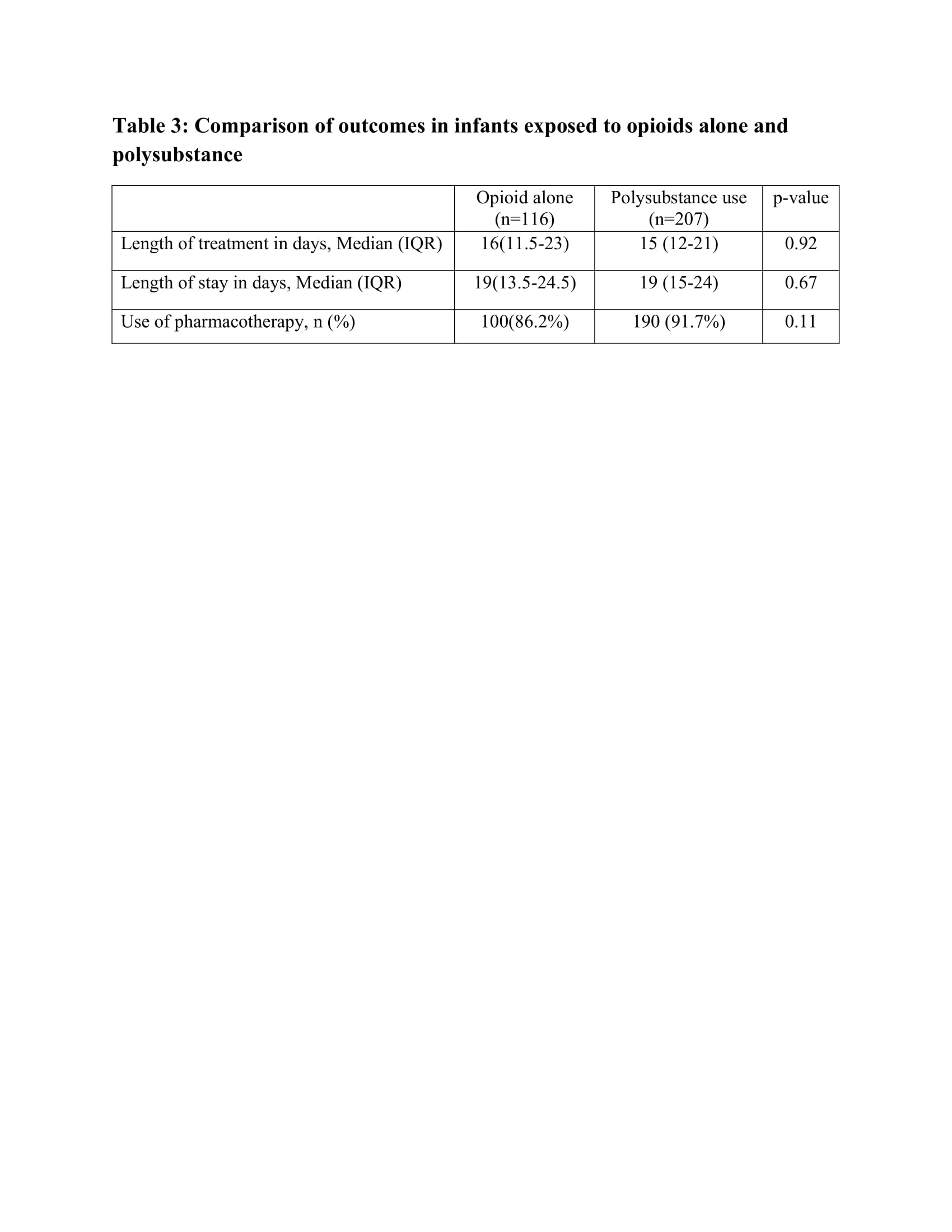Neonatal General
Neonatal General 2
274 - Neonatal Opioid Withdrawal Syndrome and polysubstance exposure-Does it matter?
Publication Number: 274.131
- MT
Michelle H. Talukder, M.D (she/her/hers)
Pediatric Resident
Children’s Hospital of Michigan
Sterling Heights, Michigan, United States
Presenting Author(s)
Background:
NOWS refers to the post-natal withdrawal symptoms in infants due to interruption of in-utero opioid exposure. Many pregnant women consume nonopioid substances along with opioids.
Objective:
The objective of the study is to compare the hospital outcomes of infants with NOWS and infants co-exposed to polysubstance in an inner-city level 3 NICU.
Design/Methods:
A retrospective chart review of infant/mother dyads admitted to Hutzel Women’s Hospital between November 2011 and May 2021 was conducted. Infants >35 weeks of gestation at birth with a history of prenatal opioid exposure were included. Infants with major congenital anomalies and/or medically unstable with severe respiratory distress, cardiac condition, and sepsis were excluded. Our primary outcome was to describe the hospital outcomes of infants exposed to opioids alone or co-exposed with non-opioid substances (polysubstance). Statistical analysis included t-test/ANOVA, Mann-Whitney, and chi-square tests as appropriate; p< 0.05 was considered significant.
Results:
Our study cohort (n=323) had a median gestational age of 38 weeks, 56% were male, 35.9% had opioid exposure alone and 64.1% were exposed to polysubstance (Table 1). Table 2 shows the hospital outcomes of NOWS infants. The median (IQR) length of treatment and length of stay was 15 (12-21) and 19 (14-24) days respectively. The majority of infants (89.5%) were discharged home on the formula: 4% of infants were exclusively breastfed at discharge and 6.5% received mixed formula and breast milk. A comparison of hospital outcomes of infants exposed to opioids alone to infants co-exposed to polysubstance are shown in table 3. The median (IQR) length of treatment was 16 (11.5-23.0) vs. 15 (12-21) days and the median length of stay 19 (13.5-24.5) vs.19 (15-24) days in opioid alone and polysubstance abuse groups respectively were not statistically significant. Pharmacotherapy was required in 86.2% infants exposed to opioids only compared to 92.8% infants exposed to polysubstance use: the difference was not statistically significant.
Conclusion(s):
The majority of the infants exposed to opioids in-utero require pharmacotherapy Nonsignificant difference was observed in in-hospital outcomes between infants exposed to opioids alone compared to infants with polysubstance exposure. .jpg)


